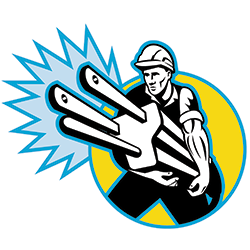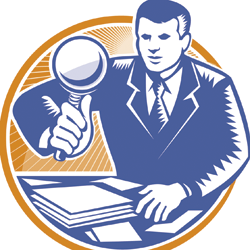 alamities happen at trade shows. It's not a question of if - it's a question of when and how bad. But when it comes to exhibiting emergencies, you can't just have a Plan B in mind, you have to have a Plan C, D, and E as well. And if a natural disaster occurs ruining all your back-ups, well, you need a plan for that, too. alamities happen at trade shows. It's not a question of if - it's a question of when and how bad. But when it comes to exhibiting emergencies, you can't just have a Plan B in mind, you have to have a Plan C, D, and E as well. And if a natural disaster occurs ruining all your back-ups, well, you need a plan for that, too.
A few years ago, I held the position of West Coast marketing analyst for EquiFirst, a Charlotte, NC-based mortgage lender. We had just built a beautiful new booth and were launching it at one of our biggest shows. I arrived on site for booth inspection an hour before the show opened, and was not happy with what I found.
 |
DRILL 1
You're exhibiting at a West Coast trade show with your largest booth. You receive a call 24 hours before the show opens that part of your exhibit is still on the tarmac of the airport near your East Coast storage facility. Turns out your exhibit shipment was too big to fit on the cargo plane that was supposed to deliver it overnight. In a misguided attempt to help, freight-company employees opened up the boxes, pulled out parts of your booth, and packed as many of the pieces as they could fit onto the plane. The employees didn't keep track of what got put on the plane and what was left behind, and you have no idea what sections to expect.
|
| |
|
One of the trade show coordinators told me the can lights that were supposed to run along the top of the booth were broken and there was no way to get replacements in time. Without those lights, our entire booth looked more like a dark, dank basement than a trade show exhibit, so you can imagine my reaction: I saw red. First of all, I couldn't understand why I hadn't been notified of this problem the moment the broken lights were discovered. Second, I just couldn't accept the idea that there was "no way out" of this snafu.
The truth is, there's always something you can do to at least try and remedy your situation. So I got on the phone with our exhibit house, told them about the problem, and asked if they had a partner in the show's host city of Minneapolis. Working with the local exhibit house, we found enough of the lights we needed to replace the broken ones. Our booth manager drove a rental car to pick up the new fixtures, and the problem was solved. The last light went up just moments before our senior executives came to see the new booth - in all its illuminated glory.
Crisis averted, right? Maybe. But the frustration generated by the situation and the trade show coordinator's apathetic attitude toward finding a solution spurred me to figure out a way to avoid such a mess in the future. So I resolved to develop a number of back-up plans for some of the most common trade show mishaps.
But I would need the help of my team in order to pull off my contingency plans, particularly at shows I don't personally attend. And while some of us may be born with the be-ready-for-anything gene, not everyone is able to think on their feet when their booth is literally crashing down around them. So, what do you do? You train them.
With that goal in mind, I created in-office mini training sessions that I schedule every three to six months. The half-day training sessions are a combination of interactive problem solving, teamwork, role-playing, and brainstorming. I work up three different disaster scenarios, aka "fire drills," and ask my trade show team to figure out feasible solutions for each one.
The individuals you invite to participate will depend on your situation, but my teams have included marketing managers and assistants, graphic designers, trade show coordinators, booth staffers, sales reps, and any other internal stakeholders I can wrestle up and convince to attend.
But no matter who's participating, this is not your typical booth-staff meeting. We do not sit around a conference table for three or four hours and simply discuss the scenarios. After all, when things go wrong on the show floor, you rarely have time to rally the troops and host a four-hour meeting to decide how you'll proceed. So to set the drills apart from the daily norm and infuse a sense of authentic urgency, I e-mail the scenarios to the team members at their desks, and enforce a strict deadline - they have 30 minutes to find a workable solution.
During the first two drills in the three-part training session, the members of my team can work together to find solutions to the show-related snafus. The final drill is completed individually.
The following step-by-step method will help you host your own trade show fire drills and train your staff to handle worst-case scenarios, while also arming your team - and yourself - with a laundry list of contingency plans. And best of all, these simple little training sessions are fun, low-pressure, and no-cost exercises that just might save the day at your next show.
1. Map Out a Plan
Put an initial plan together, including some ideas for the scenarios you'd like to address, what you want to accomplish with the project, and who will be involved. Then schedule a meeting with your boss to pitch the idea. It helps to have your boss involved with the project as his or her participation indicates that the training sessions are an important part of your program - a message that will likely increase the attendance and participation of internal stakeholders who may not directly report to you.
If you have trouble getting your boss on board, you may want to explain the importance of having contingency plans when exhibiting. For example, you can discuss how, absent a plan B, your exhibit might suffer due to lost graphics or damaged exhibit components. Or, speak the language of dollars and cents, and describe how a trade show tragedy can bite you in the budget if you're not prepared with a back-up plan. Once your boss sees the kinds of very real problems you may encounter at a trade show - and understands the potential impact to your effectiveness and/or overall expenses - he or she may be more supportive of your plan.
DRILL 2
You sent your 10-by-10-foot booth and all the collateral literature to Florida via United Parcel Service. But when you arrive at the convention center on the show's opening day, you still have no booth. Using the shipment's tracking number, you discover that the booth was on a truck, scheduled for delivery. But instead of being sent to the show location, it was mistakenly sent to the account executive's home, nearly 20 miles away from the convention center. With less than an hour until the show opens, you must figure out a way get the booth from the executive's home to the convention center and get it set up before attendees start walking the aisles, wondering why you're exhibiting without an exhibit.
|
 |
| |
|
2. Develop the Drills
Take a look at your trade show program to determine what types of fire drills to present to your team. I create three drills for each training session, including one drill involving a small 10-by-10 or 10-by-20-foot booth, another for a larger 40-by-40-foot booth, and one for an off-site event calamity. Your scenarios will depend on your individual program. For example, if you exhibit in a 10-by-10-foot booth for the vast majority of your shows, you should probably focus more on small-booth challenges.
Consider including scenarios you've personally faced at shows, such as ruined graphics, missing collateral, or delayed shipping, as those issues are likely to hit home with your team. Having said that, don't be afraid to brainstorm some unusual or natural-disaster scenarios as they will stretch participants to think outside of the box and learn to deal with problems that range from logistical hiccups to major tragedies.
Once you know what types of scenarios you'd like to include in your training sessions, you'll need to write them up into detailed accounts that provide participants with as much information as possible. (The three drills found on page 45, 46, and 47 should help.)
3. Get Ready to Rumble
With your scenarios in hand, it's time to get your training session onto your team's calendar. When you send out the meeting invite, give them an idea of what to expect, why the exercise is important, and how it will benefit them. And assuming you were successful in step No. 1, a note from your boss lending his or her support to the project isn't a bad idea either.
While you can certainly schedule your training sessions to consume more or less time, mine typically run 3 hours in length, with 30 minutes of time for each of the three scenarios, and a 90-minute review session where we come together as a group and discuss the pros and cons of the solutions they came up with. This format allows the team enough time to brainstorm workable solutions, and only takes up about half of the workday.
Just like in a real emergency, your team members will be able to call on their traditional sources - including your exhibit house, freight contact, internal employees, or a business service center like Staples or FedEx Office - to help find a workable solution. So once you have a date and time scheduled for your training session, you'll need to contact each of the sources prior to the drill and let them know they might get a call. Briefly explain the exercise to them, and ask that they treat the situations just as they would in a real emergency.
4. Ready, Set, Disaster
On the morning of the fire drills, the team receives three help cards, similar to the three "lifelines" on the TV game show, "Who Wants to Be a Millionaire?" The first card is redeemable for an answer to a single question they ask me. They can use the second card to call on the executive who oversees our department for assistance. The last card earns them a 15-minute extension, as long as they request it before the 30-minute drill is up.
I e-mail the first scenario to the team, start the 30-minute timer, and they're off. I stay out of the picture, usually in a conference room, preparing for the evaluation at the end of the drills. However, I am not above adding twists to make things more challenging. During some of the drills, I make phone calls from the conference room and pretend to be an irate sales manager - or ditzy exhibit-services desk clerk - to throw a wrench into their plans, forcing them to modify their solution and come up with a plan C.
Five minutes before each drill ends, I e-mail the team a warning, reminding them that time is almost up. And when the 30 minutes is done, I use a small siren I have to signal the end of the drill.
As soon as the signal sounds, they must e-mail me the solution immediately. When I receive the group's e-mail, I send them the next scenario, and they're off again. After the second drill is finished and the solution sent to me, each member of the team returns to his or her desk and receives the final - solo - scenario.
5. Regroup, Recap, and Results
After the staff members complete the three scenarios and send me their solutions, we all meet in the conference room for a 90-minute review session. This is always the most rewarding part of the drill exercise. I start with the first drill, asking the team members to review the solution they presented and then discuss what works well about it and what they think they can improve. At this stage, I help them develop the best possible solution so if they are ever faced with a similar situation they know exactly what to do. Then we do the same for the second drill.
 |
DRILL 3
Your company is hosting an invitation-only off-site event at a large trade show. The plan is to distribute printed invitations to the off-site event when clients and top prospects visit the booth on the opening day of the show. When you get to the convention center and open the box of printed invitations, you realize the date is wrong. Your first VIP client is scheduled to visit the booth in less than an hour, and your company's vice president is insistent on having the invitation ready to present. Crossing out the printed date and writing in the correct one is not an acceptable option. You need to get new invitations printed, and you need them now. Otherwise your vice president is going to be upset and your future with the company is
going to be in jeopardy.
|
| |
|
For the third, individual drill, we rank the solutions presented by each team member. The premise is that no solution is bad, but as a group we want to choose or create the best, most cost-effective answer. Typically, the team will cherry pick elements of several different solutions to form a single plan of attack that addresses the problem in the most effective, efficient manner.
6. Wrap It Up
After our review session is complete, we compile all of the "best practice" solutions, someone volunteers to put them into an e-mail, and we send them out for everyone to file away for future reference. Over time, team members compile their own fire-drill handbooks, which have proven to be useful tools that have saved the day when team members encounter real-life exhibit hiccups.
For example, when a member of my staff was in the office overseeing a remote show in Arizona, he received a call that all the collateral literature had been quarantined by the police. He didn't know the reason for the quarantine, but was told the literature would not be released until long after the show opened and attendees started filing into the exhibit. Drawing on a past fire drill, he got on the phone with the on-site contractor and e-mailed electronic files of the literature. The contractor took the files to the show's business center and had copies made. Problem solved.
The fire drills have even made an impact beyond my own team. A former employee, Jason Reid, called not too long ago to tell me about his own trade show emergency. Reid, who participated in the fire drills when he worked for me at EquiFirst, said that periodic rereading of his fire-drill handbook paid off for him at a recent show. When his company's booth was missing in action a scant two hours before the show opened, Reid told me he didn't panic because he had just reviewed an almost identical scenario in the handbook. By putting the solution from the fire drill to work, the crisis was averted and his booth was ready by the time the show opened.
Always Be Prepared
While I knew I was teaching my employees an invaluable skill that would serve them well in their careers, hearing how Reid put those lessons to good use further validated my faith in the fire drills. I firmly believe that they not only train my team to face whatever happens on the trade show floor, they actually help prevent potential problems from ever erupting. My team members have a better understanding of what can go wrong at the trade shows we attend, and as a result are more diligent about pre-show and at-show preparation.
Hopefully by following the steps above and adapting my methods to suit your program's specific needs, you can host your own fire drills. There is no guarantee that the solutions you come up with in the comfort of your own office will solve all the problems you and your team may encounter on the trade show floor, but it's always best to be prepared. That way, when the next trade show calamity rears its ugly head, you and your team members will have already survived a baptism by fire drill, and have plan B, C, D, and E ready to go. E |










